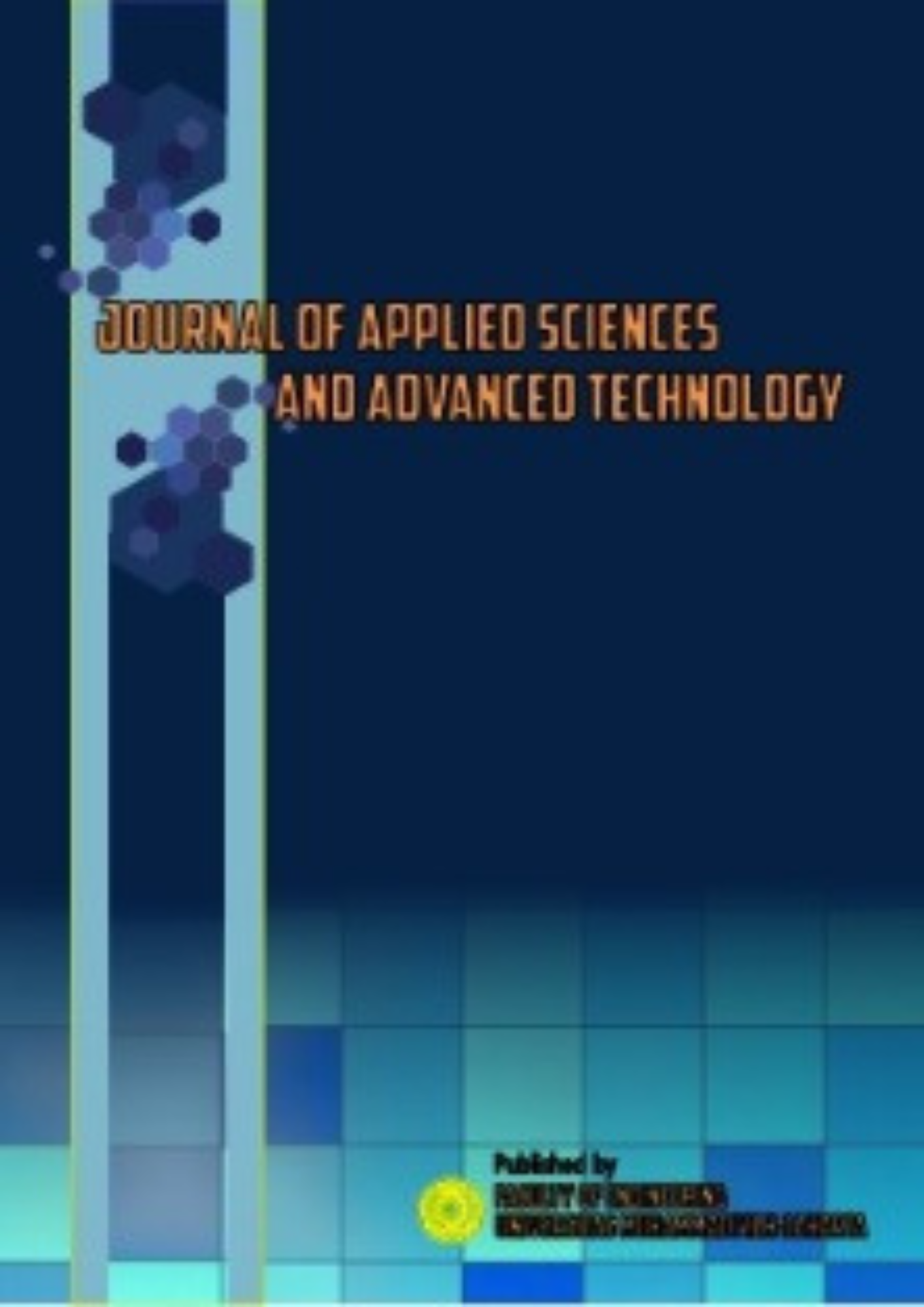Efficiency Analysis for Plate Type Heat Exchangers Using Nanofluids in the Primary Cooling System of the TRIGA 2000 Nuclear Reactor with Computational Fluid Dynamics Code
DOI:
https://doi.org/10.24853/jasat.6.3.117-128Keywords:
Nanofluids, Plate Heat Exchanger, CFD Code, Heat TransferAbstract
The TRIGA reactor is equipped with a primary cooling system that transfers heat from the reactor tank water to the secondary cooling system. Heat transfer in this system occurs mainly in plate-type heat exchangers located in the reactor building, using forced convection with the help of primary and secondary pumps. This research aims to evaluate the effectiveness, efficiency, heat transfer rate, and temperature difference. The analysis was carried out through CFD (Computational Fluid Dynamics) modeling using ANSYS Spaceclaim for geometric design and ANSYS FLUENT for simulation. Simulations using ZrO2-Water Nanofluid with volume concentrations of 0.2%, 0.6%, and 1% and variations in mass flow rates of 15 kg/s, 20 kg/s, and 25 kg/s. The simulation results show the distribution of temperature, pressure and fluid velocity. The theoretical analysis of the plate type heat exchanger shows that the use of ZrO2 with a concentration of 1% has the highest efficiency, which is 3.39% at a mass flow rate of 25 kg/s, and an efficiency of 64.82% at a mass flow rate. as much as 15 kg/s.Downloads
References
R. Nazar, “KARAKTERISTIK TEMPERATURPENUKAR PANAS REAKTOR TRIGA 2000 BANDUNGUNTUK BERBAGAI VARIASI JUMLAH PELAT,” in Prosiding Seminar Nasional Sais dan Teknologi Nuklir, Bandung: PTNBR-BATAN, Jul 2007, hal. 196–206.
BATAN, “6_BAB VI LAK TRIGA 2000_April2017,” hal. 1–20, 2016.
H. S. F. Egeten, F. P. Sappu, dan B. Maluegha, “EFEKTIVITAS PENUKAR KALOR TIPE PLATE P41 73TK Di PLTP LAHENDONG UNIT 2,” 2014.
L. Syam Sundar, “Experimental study on the thermophysical properties, heat transfer, thermal entropy generation and exergy efficiency of turbulent flow of ZrO2-water nanofluids,” Alexandria Eng. J., vol. 65, hal. 867–885, Feb 2023, doi: 10.1016/j.aej.2022.10.001.
M. Unverdi dan Y. Islamoglu, “Characteristics of heat transfer and pressure drop in a chevron-type plate heat exchanger with Al2O3-water nanofluids,” Therm. Sci., vol. 21, no. 6, hal. 2379–2391, 2017, doi: 10.2298/TSCI151110097U.
Y. A. Cengel, Heat Transference a Practical Approach, vol. 4, no. 9. 2004. [Daring]. Tersedia pada: http://dx.doi.org/10.1007/978-3-642-20279-7_5
S. M. Atikayanti, F. S. Nur, B. Santoso, dan A. Ekayuliyana, “ANALISIS PERBANDINGAN HEAT EXCHANGER TIPE PLATE-FRAME DAN SHELLAND TUBE PADA INTERCOOLER,” in Seminar Nasional Teknik Mesin Politeknik Negeri Jakarta, 2018, hal. 335–345.
F. A. . Mota, E. . Carvalho, M. A.S.S., dan Ravagnani, “Modeling and Design of Plate Heat Exchanger,” Intech, vol. 11, no. tourism, hal. 13, 2015, [Daring]. Tersedia pada: https://www.intechopen.com/books/advanced-biometric-technologies/liveness-detection-in-biometrics
Umar, E., Tandian, N.P., Syuryavin, A.C., Ramadhan, A.I. and Prayitno, J.H., 2022. CFD Analysis of Convective Heat Transfer in a Vertical Square Sub-Channel for Laminar Flow Regime. Fluids, 7(6), p.207.
Umar, E., Iso, A.R., Aziz, A. and Ramadhan, A.I., 2023. Theoretical and experimental investigation of the thermal–hydraulic parameters of the Bandung TRIGA research reactor. Annals of Nuclear Energy, 193, p.110020.
Kamajaya, K., Umar, E. and Kustituantini, S., 2021, February. Forced Convection Heat Transfer of Zirconia-water Nanofluid in Vertical Triangular Sub-channel. In Journal of Physics: Conference Series (Vol. 1772, No. 1, p. 012055). IOP Publishing.
Kamajaya, K., Hasanah, A. and Pane, J.S., 2018, July. Forced convection heat transfer studies on Al2O3-water nanofluids in a vertical hexagonal sub-channels. In AIP Conference Proceedings (Vol. 1984, No. 1). AIP Publishing.
Purusothaman, A., Baïri, A. and Nithyadevi, N., 2016. 3D natural convection on a horizontal and vertical thermally active plate in a closed cubical cavity. International Journal of Numerical Methods for Heat & Fluid Flow, 26(8), pp.2528-2542.
Habib, M.A., Nemitallah, M.A. and El-Nakla, M., 2014. Current status of CHF predictions using CFD modeling technique and review of other techniques especially for non-uniform axial and circumferential heating profiles. Annals of Nuclear Energy, 70, pp.188-207.
Ramadhan, A.I., Sari, A.M., Saptaji, K., Rahardja, I.B., Umar, E., Perdana, S.Y. and Azmi, W.H., 2023. Characterization and Stability of ZrO2-SiO2 Nanofluids from Local Minerals Indonesia as Green Nanofluids to Application Radiator Cooling System. Journal of Advanced Research in Fluid Mechanics and Thermal Sciences, 111(2), pp.126-140.
Ramadhan, A.I., Saptaji, K., Sari, A.M., Rahardja, I.B., Pedana, S.Y., Nofian, I., Saputra, A.M.D. and Firmansyah, F., 2023, October. Aplikasi Nanofluida Hijau untuk di Aplikasikan pada Sistem Pendingin Motor. In Prosiding Seminar Nasional Penelitian LPPM UMJ (Vol. 1, No. 1).
Sari, A.M., Umar, E., Prajitno, D.H., Fitriana, R., Ramadhan, A.I., Firmansyah, F., Rahardja, I.B., Faisal, A.I. and Fikriyansyah, F., 2023. SINTESA NANO ZIRKON DARI PASIR ZIRKON LOKAL DENGAN METODE FUSI KAUSTIK SODA-PRESIPITASI-KALSINASI. Jurnal Teknologi, 15(2), pp.189-198.
Ramadhan, A.I., Azmi, W.H., Sharma, K.V. and Umar, E., 2022. Experimental Investigation of Thermal Properties of Ternary Nanofluids in Water-Ethylene Glycol (60: 40) Mixture. Journal of Applied Sciences and Advanced Technology, 5(1), pp.13-26.
Ramadhan, A.I., Azmi, W.H., Alenezi, R.A. and Umar, E., 2022. Numerical Study of Convective Heat Transfer in Plain Tubes with Tri-hybrid Nanofluids for Turbulent Flow Regime. Journal of Applied Sciences and Advanced Technology, 4(2), pp.63-72.
Downloads
Published
Issue
Section
License
COPYRIGHT POLICY
The author(s) of an article published in the Journal of Applied Sciences and Advanced Technology (JASAT) retains ownership of the intellectual property rights in work (s).
PUBLISHING RIGHTS
The author(s) of an article published in the Journal of Applied Sciences and Advanced Technology (JASAT) have unrestricted publication rights. The authors give the Journal of Applied Sciences and Advanced Technology (JASAT) the right to publish the article and designate the Faculty of Engineering Universitas Muhammadiyah Jakarta Publishing as the original publisher of the article.
LICENSING POLICY
JASAT is an open-access journal that follows the Creative Commons Non-Commercial 4.0 International License (CC BY-NC 4.0), which states that:

Under this license, the reusers must give appropriate credit, provide a link to the license, and indicate if changes were made. Users may do so in any reasonable manner, but not in any way that suggests the licensor endorses users or their use.
Please take the time to read the whole license agreement (https://creativecommons.org/licenses/by-nc/4.0/). As long as reusers follow the license conditions, the owner cannot withdraw these freedoms. The following components are included under this license:
 Attribution: Users must provide appropriate attribution, including a link to the license, and indicate whether or not they made any modifications. Users are free to do so reasonably, but not in a manner that indicates the licensee approves of their usage.
Attribution: Users must provide appropriate attribution, including a link to the license, and indicate whether or not they made any modifications. Users are free to do so reasonably, but not in a manner that indicates the licensee approves of their usage.
 NonCommercial: Users may not use the material for commercial purposes.
NonCommercial: Users may not use the material for commercial purposes.












_2.png)


1.png)

2.png)
